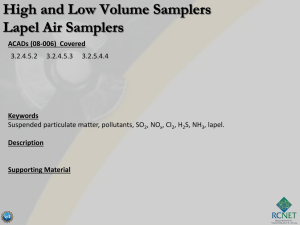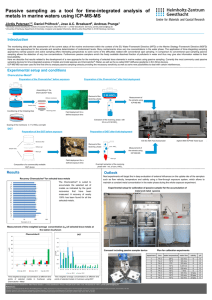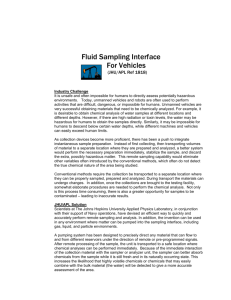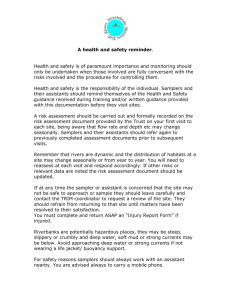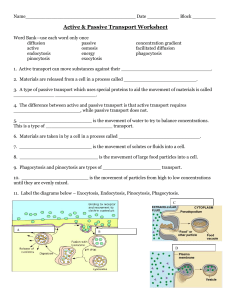Application of the Chemcatcher-Metal passive sampler as
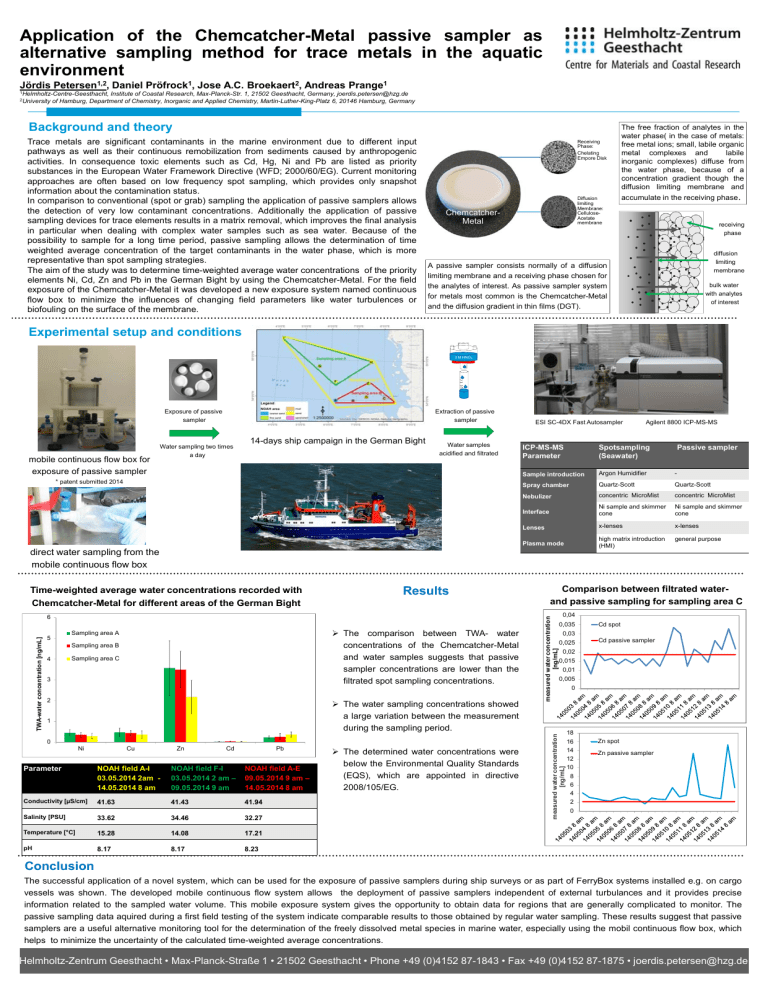
Application of the Chemcatcher-Metal passive sampler as alternative sampling method for trace metals in the aquatic environment
Jördis Petersen 1,2 , Daniel Pröfrock 1 , Jose A.C. Broekaert 2 , Andreas Prange 1
1 Helmholtz-Centre-Geesthacht, Institute of Coastal Research, Max-Planck-Str. 1, 21502 Geesthacht, Germany, joerdis.petersen@hzg.de
2 University of Hamburg, Department of Chemistry, Inorganic and Applied Chemistry, Martin-Luther-King-Platz 6, 20146 Hamburg, Germany
Background and theory
Trace metals are significant contaminants in the marine environment due to different input pathways as well as their continuous remobilization from sediments caused by anthropogenic
Receiving
Phase:
Chelating
Empore Disk substances in the European Water Framework Directive (WFD; 2000/60/EG). Current monitoring approaches are often based on low frequency spot sampling, which provides only snapshot information about the contamination status.
In comparison to conventional (spot or grab) sampling the application of passive samplers allows the detection of very low contaminant concentrations. Additionally the application of passive sampling devices for trace elements results in a matrix removal, which improves the final analysis in particular when dealing with complex water samples such as sea water. Because of the possibility to sample for a long time period, passive sampling allows the determination of time weighted average concentration of the target contaminants in the water phase, which is more representative than spot sampling strategies.
The aim of the study was to determine time-weighted average water concentrations of the priority elements Ni, Cd, Zn and Pb in the German Bight by using the Chemcatcher-Metal. For the field exposure of the Chemcatcher-Metal it was developed a new exposure system named continuous flow box to minimize the influences of changing field parameters like water turbulences or biofouling on the surface of the membrane.
Chemcatcher-
Metal
Diffusion limiting
Membrane:
Cellulose-
Acetate membrane
A passive sampler consists normally of a diffusion limiting membrane and a receiving phase chosen for the analytes of interest. As passive sampler system for metals most common is the Chemcatcher-Metal and the diffusion gradient in thin films (DGT).
The free fraction of analytes in the water phase( in the case of metals: free metal ions; small, labile organic metal complexes and labile inorganic complexes) diffuse from the water phase, because of a concentration gradient though the diffusion limiting membrane and accumulate in the receiving phase
.
receiving phase diffusion limiting membrane bulk water with analytes of interest
Experimental setup and conditions
3 M HNO
3 phase
Exposure of passive sampler mobile continuous flow box for exposure of passive sampler
* patent submitted 2014
Water sampling two times a day
Extraction of passive sampler
14-days ship campaign in the German Bight
Water samples acidified and filtrated
ESI SC-4DX Fast Autosampler Agilent 8800 ICP-MS-MS
ICP-MS-MS
Parameter
Sample introduction
Spray chamber
Nebulizer
Interface
Lenses
Plasma mode
Spotsampling
(Seawater)
Passive sampler
Argon Humidifier
Quartz-Scott concentric MicroMist
Ni sample and skimmer cone x-lenses high matrix introduction
(HMI)
-
Quartz-Scott concentric MicroMist
Ni sample and skimmer cone x-lenses general purpose direct water sampling from the mobile continuous flow box
Time-weighted average water concentrations recorded with
Chemcatcher-Metal for different areas of the German Bight
6
5
4
3
Sampling area A
Sampling area B
Sampling area C
Results
The comparison between TWAwater concentrations of the Chemcatcher-Metal and water samples suggests that passive sampler concentrations are lower than the filtrated spot sampling concentrations.
Comparison between filtrated waterand passive sampling for sampling area C
0,04
0,035
0,03
0,025
0,02
0,015
0,01
0,005
0
Cd spot
Cd passive sampler
2
1
0
Parameter
Ni
Conductivity [µS/cm]
Cu
NOAH field A-I
03.05.2014 2am -
14.05.2014 8 am
41.63
Zn Cd Pb
NOAH field F-I
03.05.2014 2 am –
09.05.2014 9 am
41.43
NOAH field A-E
09.05.2014 9 am –
14.05.2014 8 am
41.94
The water sampling concentrations showed a large variation between the measurement during the sampling period.
The determined water concentrations were below the Environmental Quality Standards
(EQS), which are appointed in directive
2008/105/EG.
18
16
14
12
10
8
6
4
2
0
Zn spot
Zn passive sampler
Salinity [PSU] 33.62
34.46
32.27
Temperature [°C] pH
15.28
8.17
14.08
8.17
17.21
8.23
Conclusion
The successful application of a novel system, which can be used for the exposure of passive samplers during ship surveys or as part of FerryBox systems installed e.g. on cargo vessels was shown. The developed mobile continuous flow system allows the deployment of passive samplers independent of external turbulances and it provides precise information related to the sampled water volume. This mobile exposure system gives the opportunity to obtain data for regions that are generally complicated to monitor. The passive sampling data aquired during a first field testing of the system indicate comparable results to those obtained by regular water sampling. These results suggest that passive samplers are a useful alternative monitoring tool for the determination of the freely dissolved metal species in marine water, especially using the mobil continuous flow box, which helps to minimize the uncertainty of the calculated time-weighted average concentrations.
Helmholtz-Zentrum Geesthacht • Max-Planck-Straße 1 • 21502 Geesthacht • Phone +49 (0)4152 87-1843 • Fax +49 (0)4152 87-1875 • joerdis.petersen@hzg.de


